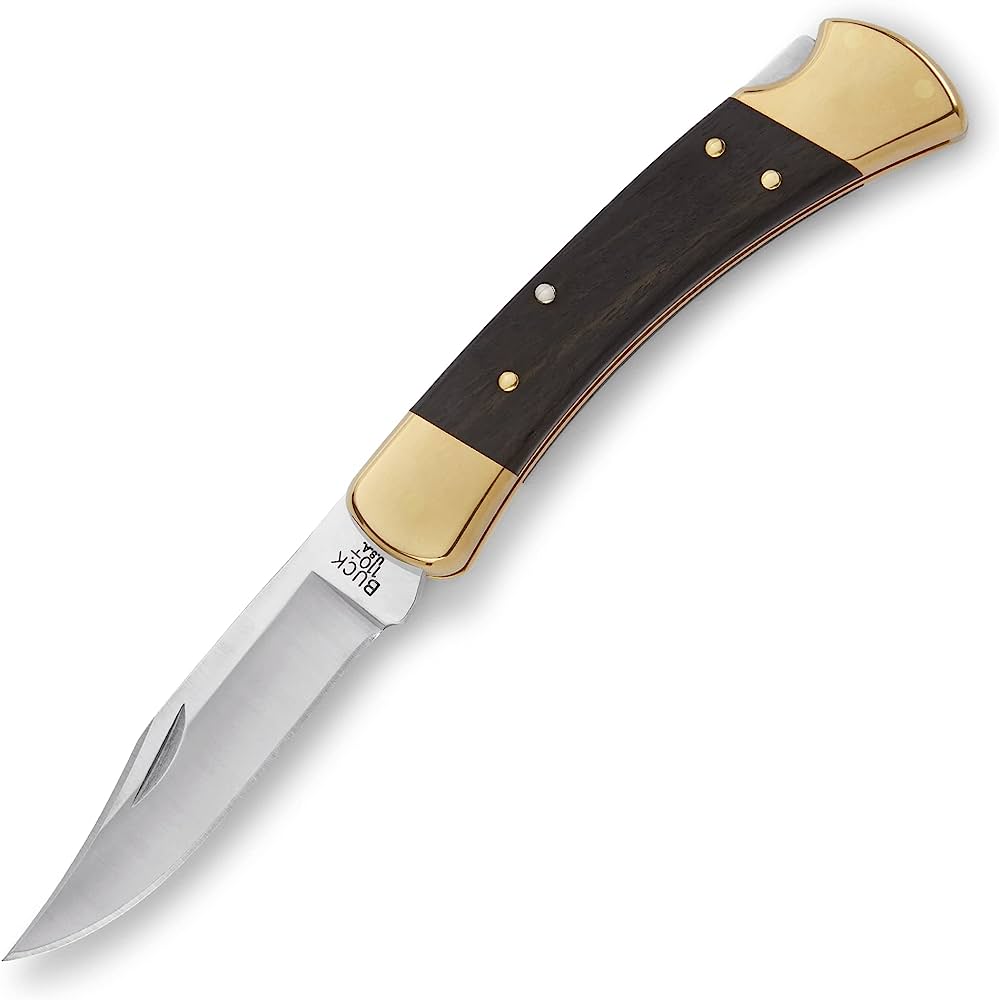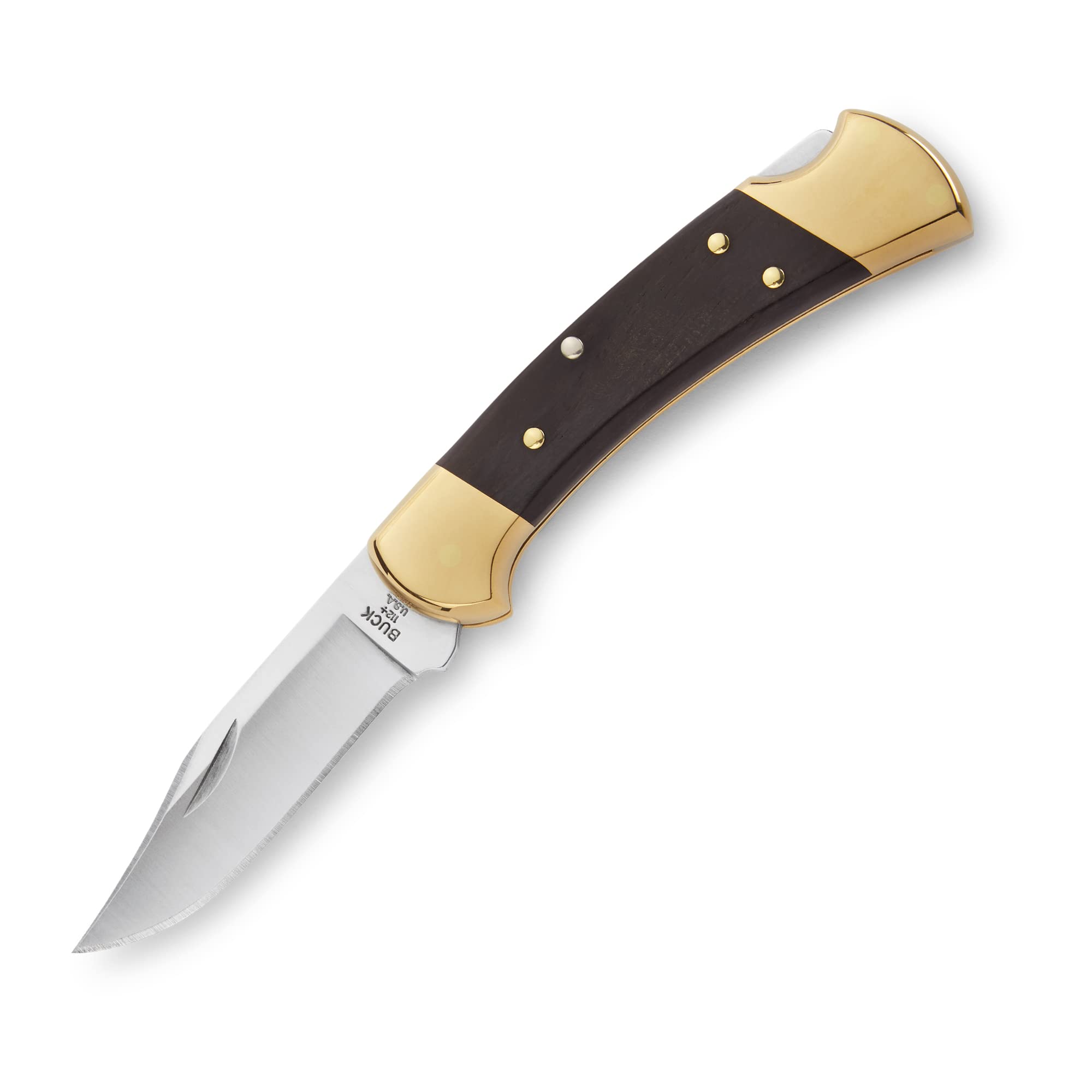Explore the ultimate showdown between the classic Buck 110 and the compact Buck 112, and discover which iconic knife reigns supreme for your outdoor adventures.
Table of Contents
Introduction
The Buck 110 and Buck 112 are two iconic knives that have carved their niche in the world of outdoor gear. Revered for their durability, design, and functionality, these knives are not just tools but symbols of craftsmanship and heritage. In this post, we’ll delve into a detailed comparison of the Buck 110 and Buck 112, exploring their features, performance, and suitability for different users and scenarios.
Buck 110 vs Buck 112 Comparison Table
| Feature | Buck 110 | Buck 112 |
| Image |  |  |
| Introduction | Introduced in 1963 | Introduced in 1972 |
| Blade Material | 420HC stainless steel | 420HC stainless steel |
| Handle Material | Dymondwood | Ebony |
| Blade Shape | Clip point | Clip point |
| Blade Size | 3.75 inches | 3 inches |
| Weight | Heavier (ideal for heavy-duty) | Lighter (better for everyday carry) |
| General Use | Versatile, better for larger tasks | Versatile, better for precision tasks |
| Outdoor Use | Preferred for camping, hunting | Good for fishing, secondary use |
| Everyday Carry | Less suitable due to size | More suitable due to compactness |
| Maintenance | Regular sharpening and cleaning | Regular sharpening and cleaning |
| Price | Generally more expensive. Check Amazon | Slightly less expensive Check Amazon |
| Value for Money | High | High |
History and Legacy
Buck 110: Introduced in 1963, the Buck 110 Folding Hunter revolutionized the knife industry with its locking fold mechanism, making it as reliable as a fixed-blade knife.
Buck 112: Launched in 1972, the Buck 112 Ranger was designed as a smaller version of the 110, offering the same reliability in a more compact form.
Design and Construction
Materials: Both knives feature high-quality 420HC stainless steel blades and brass bolsters. The handles on the 110 are made of Dymondwood, while the 112 typically sports an ebony handle.
Blade Shape and Size: The Buck 110 boasts a 3.75-inch clip point blade, ideal for detailed work. The 112’s blade is slightly shorter at 3 inches, offering more control and precision for smaller tasks.
Weight and Portability: The 110 is heavier and larger, making it more suited for heavy-duty tasks. The 112’s smaller size and lighter weight make it ideal for everyday carry.
Performance and Use
General Use: Both knives are versatile, excelling in tasks like cutting, carving, and slicing. The 110’s larger blade makes it better for heavy-duty tasks, while the 112 is more suited for precision work.
Outdoor Activities: For camping or hunting, the 110 is preferable due to its robustness. The 112 is excellent for fishing or as a secondary knife.
Everyday Carry: The 112 scores higher due to its compact size and lighter weight.
Durability and Maintenance
Longevity: Both knives are known for their longevity and robust build. Regular maintenance like sharpening and cleaning is necessary to keep them in top condition.
Ease of Maintenance: Their simple design allows easy disassembly for thorough cleaning and sharpening.
Price and Value
Cost: The Buck 110 is generally more expensive due to its larger size and material volume. The 112 offers similar quality at a slightly lower price point.
Value for Money: Both knives offer excellent value, but the choice depends on the specific needs and preferences of the user.
Which knife suits your needs best?
Enhance your decision-making process with our interactive Knife Suitability Calculator, a user-friendly tool designed to guide you in selecting between the Buck 110 and Buck 112 knives. By inputting your specific needs, such as intended usage, hand size, and weight preference, this calculator simplifies the choice, providing a tailored recommendation that aligns perfectly with your requirements. Whether you’re an outdoor enthusiast, a casual user, or a knife collector, this calculator is your go-to resource for making an informed and personalized knife selection.
Knife Suitability Calculator
Conclusion
Ultimately, the choice between the Buck 110 and 112 comes down to personal preference and intended use. The 110’s larger size makes it a go-to for heavy-duty tasks, while the 112’s compactness is ideal for everyday carry and precision tasks. The Buck 110 and Buck 112 both stand as testaments to quality knife-making. Whether it’s the larger and robust Buck 110 or the compact and handy Buck 112, both knives offer exceptional quality and performance. Your choice will depend on your specific needs, preferences, and the type of tasks you plan to tackle with these iconic blades. If you liked this content, you may consider our other calculators in everyday category.

